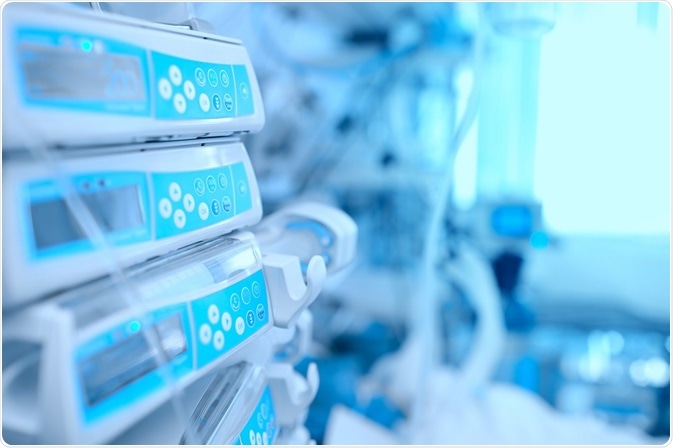
Anti-Counterfeiting Technology for Medical Devices
In the medical industry, counterfeit products are defined as those which are fake, or those which have been deliberately mislabeled or tampered with. This is not the same as sub-standard devices, which have failed quality control checks.
 Image Credit: sfam_photo / Shutterstock
Image Credit: sfam_photo / ShutterstockTypes of counterfeit medical devices
There are an increasing number of fake medical devices and in vitro diagnostics (IVDs) being introduced into the medical market. In 2010, WHO reported that 8% of all medical devices in circulation are fake, with actual numbers expected to be even higher. Although these products are not pharmaceutical, they have significant impact on the health of the users.
Fake dental products
Dental industry has a large amount of fake products, ranging from x ray machines, turbines, drills, and even fake braces. The infection from a fake lead wiring can even lead to death.
Fake surgical products
Several surgical devices, such as clip cartridges, surgical mesh, thermometers, plates, and screws have been found to be fake. In the US, $7 million worth of aortic pumps were recalled after discovering that they were fake. Although these devices may seem genuine, their parts may not function properly, which could lead to malfunction and death.
Thus, these counterfeit devices are a threat to the society and there is an urgent need to detect such devices. There is a significant difference in the presence of fake medical devices and access to them in the developed countries, such as US, EU, Australia, Canada, and UK compared to that in the developing countries.
Detecting counterfeit devices is challenging
Investigators face several challenges when it comes to the detection of fake medical devices. Firstly, many anti-counterfeiting devices do not function properly in tropical climates. Also, it is difficult to determine if the poor performance of a device is due to poor quality or poor practice. Poor lab practices, inadequate training, or an inability to interpret results can lead to investigators falsely believing that the device is counterfeit.
Anti-counterfeit packaging
Protecting the authenticity of a device through anti-counterfeit technology is one of the ways through which companies detect fake products.
Nano/microparticles
One of the methods against counterfeiting involves incorporation of dust-sized or micro particles in to the packaging, labels, or the device itself. These particles are made of silicon dioxide, and they can carry digital information which can be used to identify, trace, and authenticate products for product identification.
These particles are incorporated covertly such that the packaging is not affected. These particles can also be incorporated using preexisting laminates and varnishes.
SignatureDNA
Another anti-counterfeit method creates unique identification marker using DNA. This is called ‘SignatureDNA’ technology where specific DNA signatures can be incorporated in to packaging and the material itself. This system works as a “lock and key” model where the DNA in the package/material can only be unlocked using its complimentary DNA pattern.
Tamper-evident opening system
Another development is tamper-evident opening system or TOES, which contains a peelable cover foil in the packaging. This cover is destroyed if the packing is tampered, and this can provide protection if the package is illegally opened or misused.
Anti-counterfeit measures within devices
A significant anti-counterfeiting measure which can be added during the manufacturing stage of medical devices is an embedded unique electronic signature called a circuit signature. These signatures are deliberately added at specific places in the electronic circuits of the device during manufacturing.
Circuit signatures do not alter the function of the circuits but can provide an additional layer of security, as the authentic parts of the device can be easily identified.
Reviewed by Susha Cheriyedath, MSc
Sources:
Further Reading
Last Updated: Jun 20, 2018






















.png)











No hay comentarios:
Publicar un comentario